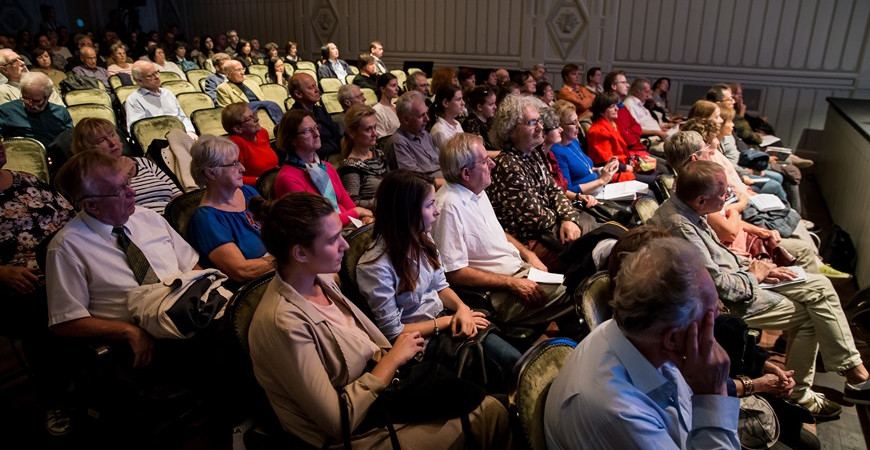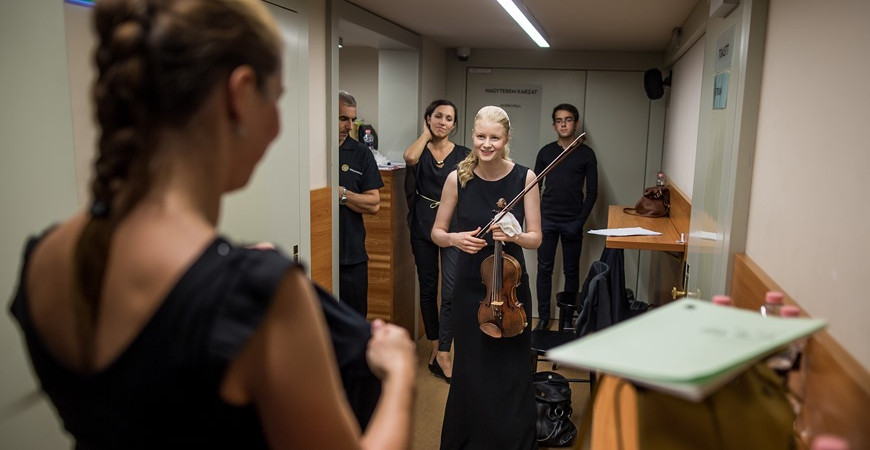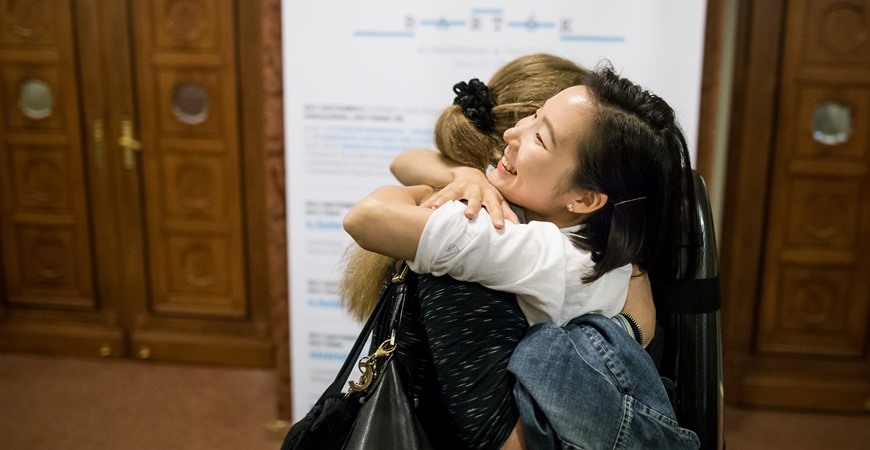Seven finalists at the Bartók World Competition
The Semi-final round of the Bartók World Competition & Festival was held in two sessions on 12 September. Although the scores were very close, seven young violinists were shortlisted for the finals, among them two Hungarians: Ágnes Langer and Gábor Homoki.
According the judgement of the international jury, 12 competitors had the chance to compare their skills and talent in the second round of the World Competition. In the Semi-final lasting from the early afternoon until late in the evening, violinists from 8 countries were featured. From these, Ágnes Langer and Gábor Homoki, the South-Korean Kim Yoerae, the French Cosima Soulez Lariviere, the Croatian Una Stanic, and two Japanese contestants Ririko Takagi és Chisa Kitagawa were selected for the finals. The finalists are taking a rest and practising today (on Wednesday), and the rounds will continue with the Final tomorrow evening.

Jury of the Bartók World Competition and Festival: Barnabás Kelemen, Dr.Tibor Tallián, Qian Zhou, Krzysztof Wegrzyn, Ivan Zenaty, Vilmos Szabadi, Joel Smirnoff, Salvatore Accardo, and Takashi Shimizu.
Photo: Liszt Academy / László Mudra
As before the previous rounds, the musicologist László Stachó again awaited the audience with a concise and spellbinding presentation. First, he talked about Bartók’s Sonata for Violin and Piano No. 1, which was inspired by an encounter: Bartók had known Jelly Arányi, another of Hubay’s students from his student years at the Liszt Academy, who briefly returned to Budapest from London in 1921 and then the two of them had the opportunity to briefly play together. A couple of month later, the sonata was ready to be performed. Dr Stachó claimed that the three-movement work „is one Bartók’s most profound compositions, demonstrating the fears related to the First World War and a sense of disillusion.”
Dr Stachó gave an account also of the Sonata for Violin and Piano No.2, which can be considered as the twin composition of No 1. He added: "The composition has a peculiar narrative, as if the birth of an ancient peasant melody was presented from its oldest, shapeless form until its completely orderly versed version of perhaps thousands of years later. This narrative discloses itself only to those who are deeply familiar with Bartók’s style.” Dr Stachó drew the attention of the audience to the 2nd movement, where a peculiar „treat” can be captured: a brief episode reminding us of one of Bartók’s burlesques A bit drunk. Should the competitors not be aware of this connection, they may easily miss something in the interpretation in the work.”

Photo: Liszt Academy / László Mudra
The musicologist László Stachó also recounted the story of the Sonata for Solo Violin, also part of the competition repertoire, which is Bartók’s last completed composition, which was commissioned by the world-renowned star violinist Yehudi Menuhin in 1942. Bartók was inspired by the an American virtuoso’s performance of one of Bach’s sonatas for solo violin to compose this work only in just a couple of weeks during his sanatorium stay in North Carolina. As an interesting titbit, Dr Stachó mentioned that in the last movement of the Sonata, Bartók originally wanted to mark quarter tones, but they have caused difficulties even to Menuhin, so when the violinist released the work, the semitone version got preserved and for a long time only this publication was accessible.
The semi-finalists could choose between three options: either they played one of Bartók’s Sonata for Violin and Piano or the Sonata for Solo Violin in their entirety OR only one movement of these, a virtuoso piece and a movement of a sonata for violin and piano from the 18th, the 19th or the 20th centuries. The most competitors picked the latter option performing one movement of the Violin for Solo Violin.

Backstage: Cosima Soulez Lariviere. Photo: Liszt Academy / László Mudra
The finalists will be playing one of the violin concertos by Mozart (No. 3, No. 4 or No. 5) accompanied by the Franz Liszt Chamber Orchestra conducted by Gergely Ménesi. The Final, as the previous rounds, can be followed online.

Kim Yoerae, after the decision of the jury. Photo: Liszt Academy / László Mudra


